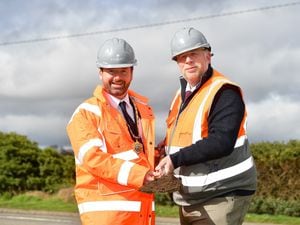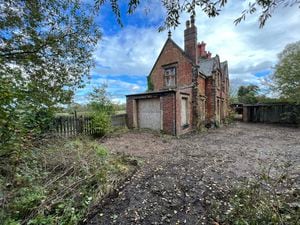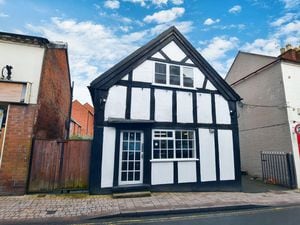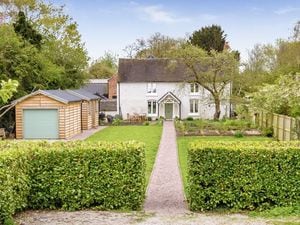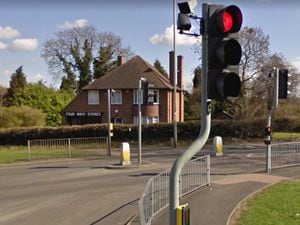Is it time to tear up the planning red tape?
It's the only way to get Britain moving, say three new reports.
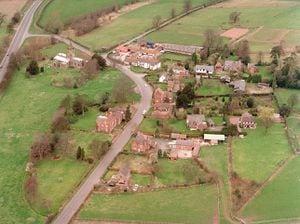
Garden villages. Sounds innocuous enough, doesn’t it? Maybe images of Bournville spring to mind, the idyllic suburb of Birmingham created by the benevolent Quakers who owned Cadbury.
Well, for many residents of the tiny village of Tong, between Albrighton and Shifnal, talk about the possibility of creating five new garden villages sounded more like a nightmare.
There’d be between 10,000 and 13,000 new homes on green belt land. A potential 150-fold increase in the village’s population of 243.
Parish councillor Mark Weston was appalled: “This could mean an extra 30,000 cars. That would be similar to having V Festival every day in Tong. The people of Tong do not want this.”
It is not hard to see why residents are unhappy about the prospect of seeing their sleepy rural village being transformed into one of Shropshire’s largest towns over the next 25 to 30 years.
But if we are serious about tackling Britain’s housing shortage, will we need to look at freeing up planning red tape? And could that mean rethinking our attitude towards green belt development?
Relaxed rules near railway stations
Certainly, the right-leaning think tank Freer believes so. The organisation this week published a paper by Tory MP Simon Clarke, which calls for green belt rules to be relaxed for building homes within half-a-mile of railway stations.
It goes without saying that the implications for villages such as Albrighton and Cosford could be huge – as well as for larger towns such as Shifnal, which have been transformed in recent years by housebuilding.
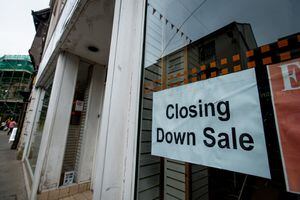
Mr Clarke, who sits on the Treasury select committee, says: “The green belt is not part of the problem, but is the the problem.
“As currently constituted, it has become the central obstacle to enabling the building of the volume of houses we need, where we need them.
“Introduced in the postwar years by a socialist government running a planned economy, it represents an arbitrary division of our country.
"While housing affordability is, of course,also an issue in places without green belt land, this arbitrary division has left us with areas where new building is at least possible, if subject to constraints, and areas where it is virtually impossible.”
Outdated?
There are 16 green belt areas across England, which were created as a result of the Town and Country Planning Act. They largely exist to provide a ring of countryside around urban areas; while the restrictions imposed on them are complex, the general principle is that there is a presumption against development on green belt land, and that building must take place in other areas.
The green belt in Shropshire is comparatively small, being confined to an area to the east of Bridgnorth, Telford and Broseley, and to the west of Dudley and Wolverhampton.
It runs down to the boundary with Worcestershire in the south, and up to Oakengates in the north. It does, though, provide what many consider an important buffer, preventing its communities from being absorbed into the larger neighbouring towns.
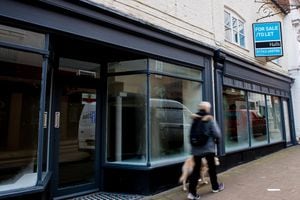
Mr Clarke, who is MP for Middlesbrough South and Cleveland, believes it is now an outdated concept, and is stifling the building of homes in places ideally suited for them.
“The green belt does not, as most people might reasonably assume, correlate with green or environmentally-protected land such as national parks or areas of outstanding natural beauty,” he says.
“A recent review found that up to 11 per cent of the UK’s brown field, or previously developed land, falls within green belt land.
“About a third of all green belt land in England is actually intensive agricultural land.
“We should lift restrictions on new house building within half-a-mile of existing stations – railway, underground and trams – while protecting environmentally-valuable land, so we can address our homes crisis with the seriousness it deserves.”
Need for houses
Steve Carey, speaking on behalf of Bradford Estates, says Mr Clarke's paper represents a useful contribution to the green belt debate.
“It clearly spells out the national housing need, as well as the continued requirement to protect much of the green belt to prevent urban sprawl, as was its original purpose,” he says.
“However, we also recognise the way in which the urban landscape and population has changed since the policy was originally drafted."
Bradford Estates controls the land around Junction 3 of the M54, which is currently being considered for strategic business and housing development as part of Shropshire’s local plan process.
“Its location close to transport links means that it has the potential to contribute to the growth and economic prosperity of the county, in order to support Shropshire’s longer terms aims," Mr Carey adds.
"However, any proposals are very much in their infancy and will be subject to Shropshire Council’s decision on its local plan and green belt reviews.”
Mr Carey adds that in the meantime Bradford Estates is committed to working with local communities to see how the site may support local aspirations, should the future proposals be deemed acceptable by the two policy reviews.
What about brownfield sites?
Mr Clarke’s ideas are unlikely to prove very popular with the Campaign to Protect Rural England, which last month warned that the green belt was disappearing at an alarming rate, with relaxed planning laws being blamed for a loss equivalent to 5,000 football pitches.
Paul Fisher, chairman of Tong Parish Council, says the Government needs to look at developing derelict brownfield sites before it starts encouraging building in the countryside.
“If you catch the train from Wolverhampton to Birmingham, you won’t believe how much derelict wasteland there is. You could build tens of thousands of houses along there,” he says.
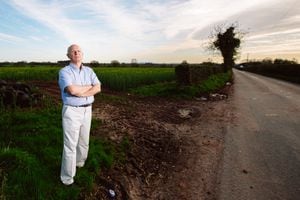
“All I hear is that the land is contaminated, it’s going to cost too much to put it right, and that the West Midlands Combined Authority can’t afford to put it right.
"I also hear that nobody wants to live there, but does that mean it has got to be a derelict wasteland forever?”
Mr Fisher says his conversations with developers suggest that one of the biggest pressures to build on the countryside comes from owners of brownfield sites, who insist on charging excessive prices.
“I was talking to a property developer last week, and he said a lot of the brownfield sites are contaminated, and people want too much money for them,” he adds.
“The people who own them seem to think if they sit on them long enough, people will offer what they want. I think those sites ought to be compulsorily purchased by someone, whether it is local government or Whitehall.
Mr Fisher does accept there is an argument for developing brownfield sites within the green belt, though.
Ludlow Liberal Democrat Councillor Andy Boddington says he would be very wary of anything that made it easier to build on green belt land.
“The green belt is the most successful planning policy ever,” he says. “It has stopped cities from sprawling and joining up, avoiding the sprawl like you have in Los Angeles where the development stretches for miles and miles.”
To paraphrase an old joke, you could probably ask five different people what needs to be done to make our planning system more responsive to the needs of today, and come up with six different opinions.
But what they would probably all agree on is that if we are to provide the homes that people want to live in, and the towns people want to visit, then something will need to be done soon.

